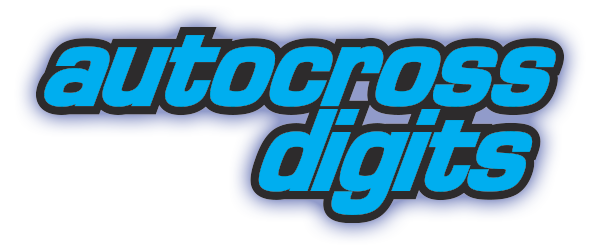One of the most useful things I did as the solo chair for WORSCCA was to implement printed course maps - often publishing them on the website before the event even started!
Printing/publishing course maps serves a variety of purposes:
- Help racers help themselves. No guessing as to where the course goes on race day. No guessing were "corner 3" is located for a course worker.
- Simplify setup. Handing a course map to each helper at course setup makes things dead simple. Each worker can take a car full of cones to one section of the track and get to work.
- Avoid stupid mistakes. Have you ever set up your entire course only to realize a timing cable wouldn't reach, or was destined to cross the course at some point? I've seen two broomsticks used to bridge a cable over the course. Not ideal.
- Advertising space. If your club is fortunate enough to have event sponsors, placing their logo and contact info on the course map ensures that every racer at the event will see it. In fact, this space is more prominent than virtually any other space, including the website or a trackside banner.
Granted, creating a course map on paper that translates perfectly to real life can take some practice, but with these tips, hopefully you'll be off to a good start. Today, we'll create a course map for the Cincy region's newest lot at Trader's World.
Step 1 - Find an Overhead View
There are a lot of sources for this. Google Maps works fine, but I like to use the county's ArcGIS viewer. These can typically be found on your county auditor's website. The reason I like to use this source, is because it offers a tool with which to measure area and distance, making proper scaling of elements much easier.
Here we have found our lot and used the measuring tool to measure the perimeter of the lot that's to be used.

Step 2 - Trace the Lot Outline
If you're drawing courses on plain paper, print the lot out and trace the outline onto a blank sheet of paper. If you're using a computer, screen shot it and paste it into your favorite graphics program. I'll be using Adobe Illustrator in this case. It doesn't need to be overly detailed. Focus on tracing notable objects - particularly objects that can't move or would interfere with a course. Light poles, parking blocks, buildings are all good examples of objects to have on a lot outline.
Here I've traced the lot and added any notable obstacles. Interestingly, this lot features only one light pole, but two artificial palm trees. Also, there are some trucks parked in the far corner of the lot.

It's important to note that there's really no substitute for a visit to the lot. Some obstacles won't show on an overhead view. Potholes, seeping pavement, manholes, crests and valleys are all examples of objects that can factor into a course layout.
Step 3 - Establish Scale
We don't want a sweeper to have a radius of 10ft, and we don't want 200ft between cones in a slalom. To avoid situations like this, we must establish scale.
I talked about how the ArcGIS utility afforded the ability to measure objects, which helps to establish scale quite easily, but there are plenty of other ways to skin this cat. The typical parking space width is about 8.5ft. An average passenger car is about 13ft long. If your overhead photo features any of these cues, they can be used to establish scale.
I've found it's best to place both a graduated scale and some common course elements at the appropriate scale onto the course map for reference. If you're using a computer, it can simply be copied again and again to create a course. If using paper, the elements can be measured and applied when drawing the course. Below is a sample.

Step 4 - Start Designing
Really, at this point, it's all creativity, and practice comes into play. Don't be afraid to make some changes after setting up and doing some test runs. Just make sure to make the changes on your course map as well, so racers don't get confused.
Here is a quick list of base elements that should be considered when laying out the course, in addition to just the cones.
- Pits/preferred parking area
- Staging area
- Start
- Finish with plenty of runoff
- Timing and Scoring trailer
- Timing cables
- Start and finish boxes
- Corner stations, along with markings defining which parts of the course belong to which corner
In addition, it's helpful to include a schedule for the day. Registration, course walk, first car off and more will help to ensure everything stays on schedule.
I won't get into what makes a great course, as there are several great resources available already, which I highly recommend reading to anyone designing a course. As you can see though, it's not incredibly difficult to put together a useful, professional looking course map that anyone can understand.

Of course, looking professional doesn't stop at the course map. Get your professional, high-quality autocross digits now!


2 comments
Yep – I used Adobe Illustrator. Any vector program could also work. Inkscape is an example.
Hi, I wanted to get more information about the software used to design the autocross course over the map? It looks like it was designed with Apple Illustrator? Thanks for your feedback and response.